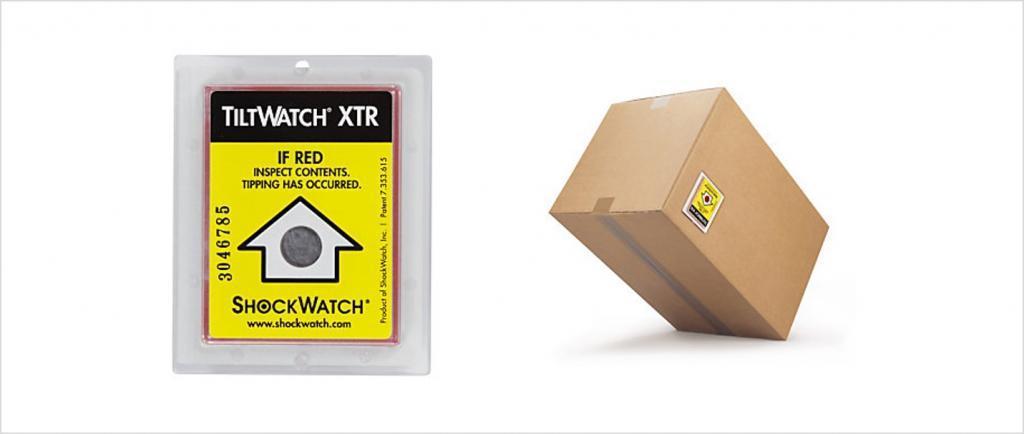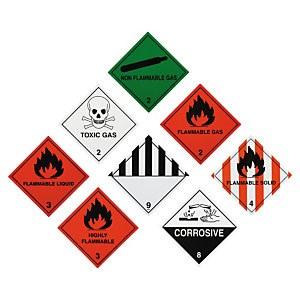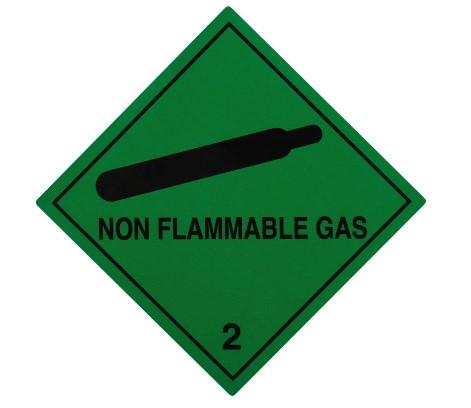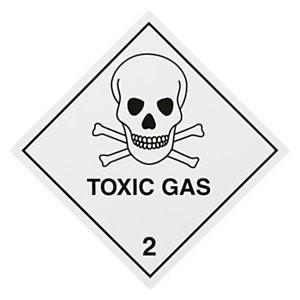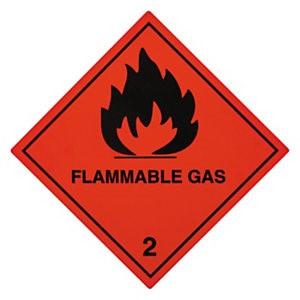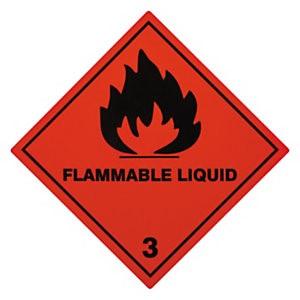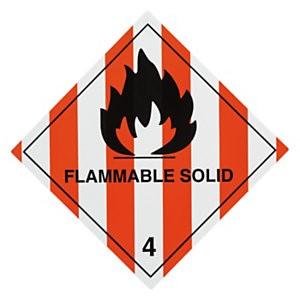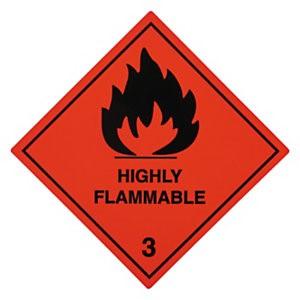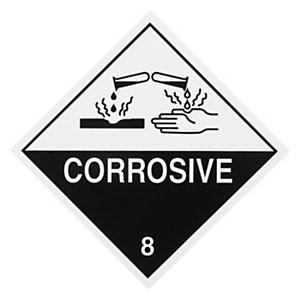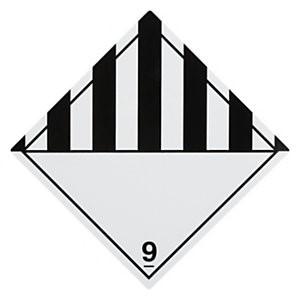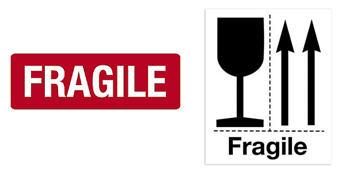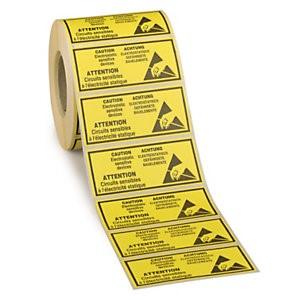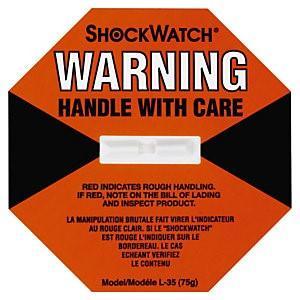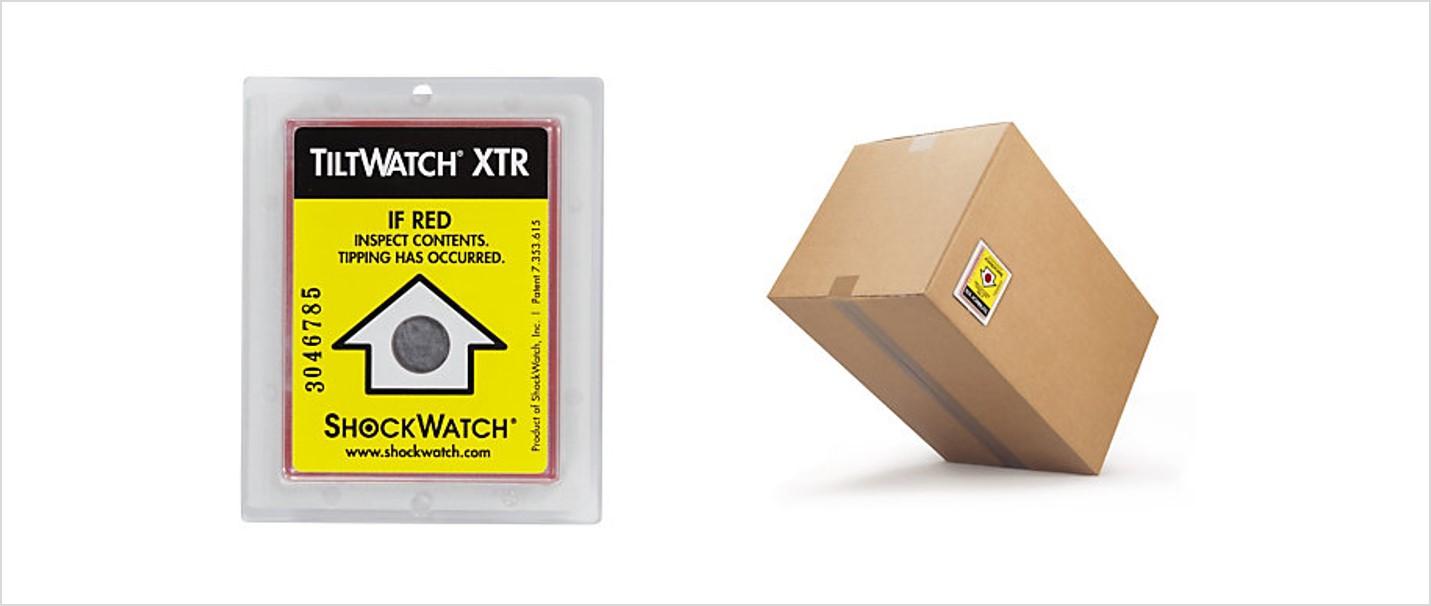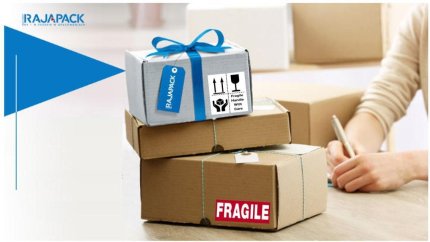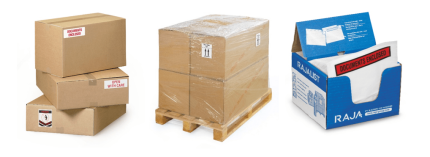How to label what is in a package is vital to protect the people handling the package, the people receiving the package and, often, to protect the package itself.
Understanding how to use packaging labels and hazard labels is a key part of correctly packaging a product for shipping, and for delivery and storage. There are a range of labelling solutions to help guide anyone coming into contact with the package; what it contains and how to handle it.
These labels fall into two main groups: packaging labels that show how to handle a package – and, indeed, how it has been handled – and hazard labels that reveal more specifically what potential threats the goods pose if mishandled.
How to label a package correctly involves using combinations of these labels to outline how to handle and care for packages and to know what is inside.
So what labels are available and what do they mean?
Chemical warning labels and what they mean
There are a wide variety of chemical warning labels available, covering a wide range of information that anyone handling a package needs to bear in mind.
As we have seen, these can range from simple instructions that help to protect the goods in transit from mishandling – such as ‘Fragile’ and ‘Do not bend’ – right through to very specialist chemical warnings, outlining what the hazards are should something befall that package.
Remember, in many instances, you may need a combination of these labels in each package.
So, what chemical warning labels are there and what do they mean?
The range of chemical hazard labels offers advice no specifically as to what is in the package, but what potential hazardous effects those goods could have if mishandled.
These include:
- Non Flammable Gas – these simple green labels let shippers know that they are handling gas, but that it won’t explode or burn. That doesn’t mean, however, that it isn’t dangerous in another way – something that will be denoted by other labels. An example would be helium, often found in balloons.
- Toxic gas – as the image suggests, this contains gases that can kill. These labels can be used in conjunction with, say, non-flammable label as the gas contained may not be flammable, but could be toxic, such as carbon monoxide.
- Flammable gas – completing the range of gas labels, flammable gas warns of gases being used or transported that can burn or explode. Again, this may be non-toxic, but dangerous because of burning. An example would be Oxygen.
- Flammable liquid – along with flammable gas, liquids can also be a fire hazard, either when near heat or on contact with air. These labels similarly need to be used in conjunction with others to specify what hazards a particular product poses. An example of a flammable liquid is petrol.
- Flammable solid – strikingly stripey, these labels denote solids that can burn or catch fire. Solids are often not seen as so hazardous as they don’t ‘spill’ per se, however, there are some that do burn – an example being firelighters. Wax is also a burn hazard too.
- Highly flammable – this warning label warns of content that can burn readily, easily and fiercely. This distinguishes goods that are more likely to ignite and to create a blaze that is hotter and harder to tackle than goods that are ‘just’ flammable. An example would be lighter fluid and even some aerosol cans.
- Corrosive – these labels warn of substances that are gaseous, liquid or solid – that can steadily erode and destroy materials and flesh. Typically, corrosion actually involves the oxidation or rusting of metal, but in the realm of safety labels it refers to substances that can dissolve and/or ‘eat away’ any material and can be either acidic or alkaline. An example would be potassium hydroxide, more commonly found in fertilisers.
- Miscellaneous – For goods that are hazardous for other reasons or for packers who want to label their products themselves, there a range of miscellaneous labels that can be filled in manually. These labels also suit people who have a range of goods and want to then offer a reason why they are dangerous. Typically, these labels are there to warn of hazards which can then be specified.
Packaging hazard labels and what they mean
Chemical hazard labels warn of what can happen if the goods contained within a package are mishandled – avoiding mishandling in the first place is perhaps even more vital and so there are a range of labels to that end.
Used in conjunction with chemical hazard labels, these can paint a good picture of how to handle goods and why they need to be handled properly.
There, as we shall see, also labels that show how goods have been handled.
So what packing labels are available?
- Fragile – these labels come in a variety of styles and are a basic indication that goods need to be handled carefully as the contents might break. They can be simple or more informative – including ‘This Way Up’ indication and an idea of what is inside. In conjunction with chemical labelling this can help handlers know precisely what to do with the package.
- Handle with care – Handling instructions are also a vital part of the labelling process, outlining not only what is in the package, which way up it should go but also specifically how to handle it.
These labels include ones that require general gentle handling, to those that suggest careful opening, to those that give more specific instructions such as ‘Do Not Crush’, ‘Do Not Bend’ and the like.
- Antistatic labels – One hazard that is of increasing importance in the modern era is that of static. Electronic goods – especially computers and phones, although ‘computers’ now appear in all manner of devices, even washing machines – are sensitive to electrostatic interference – it can fry their innards.
‘Electrostatic sensitive devices’ labels are used to make sure packages containing such goods are kept clear of electrostatic and magnetic interference.
- Shock and tilt labels – The final class of packaging labels are those that help to understand how a package has been handled in transit: to make sure that goods have been treated properly and to pre-warn anyone handling the package that it may be damaged. Labels that tell a story.
Shockwatch labels highlight if a package has been dropped or bumped. They feature a small, contained glass vial within the label, which releases red dye – so a small window on the label turns red – if the package has been shocked.
Tiltwatch labels are there to show whether a ‘This End Up’ or ‘This Way Up’ package has been kept the right way up, again featuring a small panel that turns red if a package has been tilted more than 90 degrees.
How to read a chemical label
The key to reading chemical labelling – in fact all the labelling – on a package lies in looking at what labels have been used. As we have seen, a combination of labels can be used to label a package to outline what is in it, what hazards that may contain and how best to handle that package to make sure that those hazards are kept from becoming an issue.
A combination of packaging and shipping labels used on one parcel could look like this:
This labelling implies that the contents are fragile, probably in a glass or ceramic container and needs to be kept upright, because the contents, were it to be spilled is corrosive to skin and material. The package should also not be crushed or mishandled and a Tiltwatch label indicates to anyone handling it if it has been tipped or bumped. This way when it’s been opened it can be done so with care.
Conclusions
How to use packaging labels and hazard chemical labels is vital to both protection of the goods, as well as the protection of the people handling them and those receiving them.
Taken together, the labels can tell a story of what is both in the package, how to handle it and, with some of the more specialist labels, what has happened to it in transit.
Applying common sense to the use of these labels can help goods to be carefully handled and to arrive in good shape. And it makes economic sense too. Goods can get damaged in transit and storage, but labelling them properly so that they are handled and stored correctly can significantly mitigate this damage – and that has to make sound business sense.
Want to know more about shipping and packaging labels?
For additional advice on labelling your packages for shipping, packaging labels, read our shipping labels guide or contact our team of Packaging Specialists on 0800 542 44 28.







